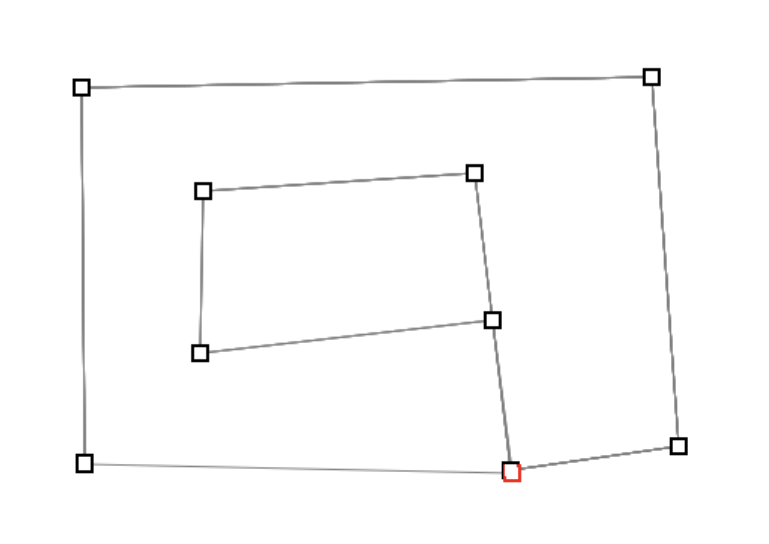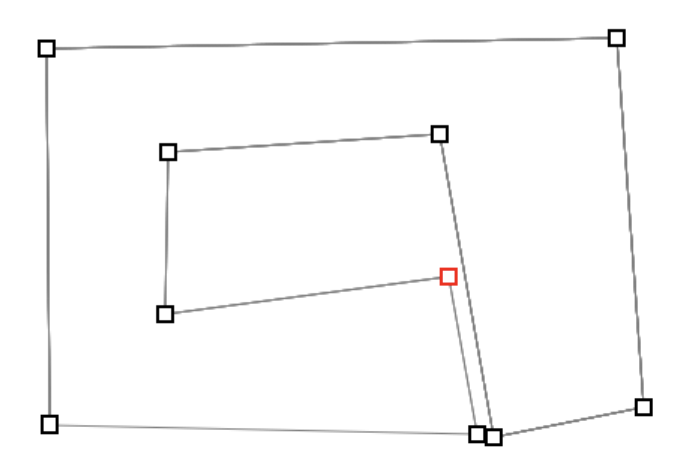It's a bit complicated, and resource-costly method, but any concave polygon can be drawn with the following steps (note this methos works surely on flat polygons, but I also assume you try to draw on flat surface, or in 2D orthogonal mode):
- enable stencil test, use
glStencilFunc(GL_ALWAYS,1,0xFFFF)
- disable color mask to oprevent unwanted draws:
glColorMask(0,0,0,0)
- I think you have the vertices in an array of double, or in other form (strongly recommended as this method draws the same polygon multiple times, but using glList or glBegin-glEnd can be used as well)
- set
glStencilOp(GL_KEEP,GL_KEEP,GL_INCR)
- draw the polygon as GL_TRIANGLE_FAN
Now on the stencil layer, you have bits set >0 where triangles of polygon were drawn. The trick is, that all the valid polygon area is filled with values having mod2=1, this is because the triangle fan drawing sweeps along polygon surface, and if the selected triangle has area outside the polygon, it will be drawn twice (once at the current sequence, then on next drawings when valid areas are drawn) This can happens many times, but in all cases, pixels outside the polygon are drawn even times, pixels inside are drawn odd times.
Some exceptions can happen, when order of pixels cause outside areas not to be drawn again. To filter these cases, the reverse directioned vertex array must be drawn (all these cases work properly when order is switched):
- set glStencilFunc(GL.GL_EQUAL,1,1) to prevent these errors happen in reverse direction (Can draw only areas inside the polygon drawn at first time, so errors happening in the other direction won't apperar, logically this generates the intersectoin of the two half-solution)
- draw polygon in reverse order, keeping glStencilFunc to increase sweeped pixel values
Now we have a correct stencil layer with pixel_value%2=1 where the pixel is truly inside the polygon. The last step is to draw the polygon itself:
- set glColorMask(1,1,1,1) to draw visible polygon
- keep glStencilFunc(GL_EQUAL,1,1) to draw the correct pixels
- draw polygon in the same mode (vertex arrays etc.), or if you draw without lighting/texturing, a single whole-screen-rectangle can be also drawn (faster than drawing all the vertices, and only the valid polygon pixels will be set)
If everything goes well, the polygon is correctly drawn, make sure that after this function you reset the stencil usage (stencil test) and/or clear stencil buffer if you also use it for another purpose.


